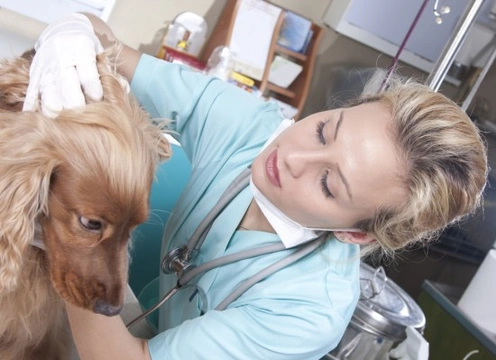
The five most significant changes to veterinary care over the last eighty years
Many of us are familiar with James Herriot, the pseudonym of the late Yorkshire-based veterinary surgeon James Alfred Wight, who wrote the ‘All Creatures Great and Small’ series of semi-autobiographical books about his life in practice in the Yorkshire Dales, which were later turned into a television series of the same name. To most pet owners and veterinary surgeons today, the fascinating tales of the life of a pre-second world war vet seem very distantly removed from how we care for our pets today, and how they are treated and cured in veterinary practices. It is certainly fair to say that today’s younger practicing veterinarians would stand little chance of understanding or administering many of the now obsolete treatment protocols of the past, much as the vets of James Herriot’s era would feel very out of place in our modern, technologically equipped veterinary surgeries. Like human medical science, the face of veterinary care has changed dramatically since the Second World War, and while the core skills of nursing, administering treatment and handling animals of all shapes and sizes remain universal, how veterinary professionals go about doing that, and the tools that they have at their disposal to do so, are quite different! However, some of the changes are less technological and scientific, and more sociological; how we feel about animals has changed greatly over the last eighty years as well, which has had as great an effect or perhaps even greater than any scientific discoveries could hope to achieve. So, what are the five most significant changes or discoveries that have altered the face of veterinary care over the last eighty years? Read on to find out more!1. The most significant development that has changed the face of veterinary medicine over the last eighty years, has been the shift in public consciousness from regarding animals as almost exclusively working beasts or to provide something for people, to the appreciation of animals as pets. Eighty years ago, small animal medicine was really in its infancy, with few people able to afford to own a companion animal as a pet purely for its own sake. Farming in the UK was big business, and owning an animal as a pet was considered rather a luxury. Now, our animals are often part of our families, and people today are much more inclined to treat them as such, often spending a significant amount of time and money on their care and veterinary treatments, which in turn has shaped the way that veterinary medicine has evolved to treat our pets. Pet insurance had not even been thought of in mid-20th century Britain, and now it is a multi million-pound industry!2. The discovery of both antibiotics and penicillin are two things that have had a massive effect on veterinary treatment since the Second World War, in much the same way that it has changed the face of healthcare for people. The discovery of these drugs was viewed as a miracle eighty years ago, with a wide range of previously debilitating and incurable diseases becoming treatable and curable almost overnight. Of course, later came various setbacks such as the discovery of bacterial resistance to antibiotics and the mutation of super-strains of bugs, such as MRSA and other condition; however, penicillin and antibiotics rocked the veterinary world and still has a huge effect on how we medicate our pets today to give them the best chances of recovery.3. The large-scale promotion of spaying and neutering domestic pets is a relatively recent concept in terms of veterinary and pet care history; now, it is considered very much standard to have our pets spayed or neutered, and more unusual to keep an entire pet. However up until around thirty years ago, this was not the case, and spending the time and money to have a pet neutered was often not even given any thought. 4. Vaccinations against a range of preventable conditions and diseases is another huge area of advancement in veterinary medicine, and thanks to vaccination, the general population of pets such as dogs and cats now live longer, are generally healthier, and a wide range of transmissible diseases and conditions have been almost entirely eradicated from many areas of the country. The conditions that we vaccinate against have changed over the last eighty years, as has the prevalence rate and severity of a range of conditions themselves, all thanks to this essential addition to the preventative healthcare arsenal.5. Finally, the technology that you will see in the average veterinary clinic really bears witness to how far we have come over the last eighty years; and how the crossovers between human and veterinary medicine have been used to benefit both animals and humankind. The MRI machines, ultrasound scanners and x-ray equipment that you will see in well equipped practices all got there thanks to research and advancements made in human medical care; a traffic that is by no means all one way. Today, veterinary research and advancements, such as the pioneering neuro-orthopaedic work performed by veterinary surgeon Noel Fitzpatrick, are having a profound effect on the face of human medical treatment too.When you consider how far both human medicine and veterinary treatment has come over the course of the last eighty years, it is only natural to wonder what developments and advances might be made over the course of the current century... And how the vets of today, who are shaping the technology and advancements of the future, will play a part in this.



